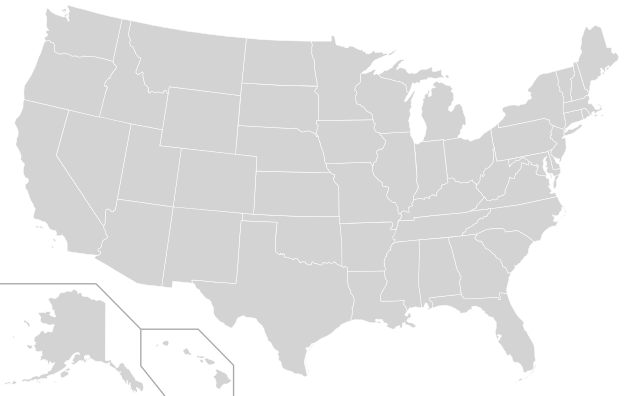Reporter Ed Mendel covered the Capitol in Sacramento for nearly three decades, most recently for the San Diego Union-Tribune. More stories are at Calpensions.com.
Pension cost cuts seemed unlikely after bankrupt San Bernardino agreed to repay CalPERS for skipped payments and adopted a recovery plan that only cuts bond and retiree health care debt, as in the previous Vallejo and Stockton bankruptcies.
Then this month U.S. Bankruptcy Judge Meredith Jury asked for more information showing that if she approves the San Bernardino recovery plan, rising payments to CalPERS will not push the city into a second bankruptcy.
“I don’t really think it’s in anybody’s objection, but the public perception — the media perception — of the two cities with confirmed (bankruptcy exit) plans, that being Vallejo and Stockton, is that they’re already in trouble because they didn’t impair CalPERS,” Jury said at a hearing on Oct. 8, as reported in the San Bernardino Sun.
“ . . . I don’t think there is adequate discussion of how much those raises are going to be. I have heard other things, I think in this court, that it is an exponentially increasing number that will have to be paid in order to keep retirement plans intact. There comes a point where no matter what I confirm it will fail.”

Actuaries hired by the city project that payments to the California Public Employees Retirement System will more than double from the current level by fiscal 2023-24, reaching $29 million a year, the Sun reported.
In the latest CalPERS report for the San Bernardino plans (June 30, 2013), the police and firefighters rate is forecast to rise from 38.8 percent of pay this fiscal year to 49.3 percent in fiscal 2020-21, the miscellaneous rate from 24.2 to 32 percent of pay.
Last week an editorial in the Riverside Press-Enterprise, noting the judge’s remarks on Oct. 8, urged Jury to “put pensions on the table” and “insist that San Bernardino renegotiate its unsustainable contract with CalPERS.”
Pension cuts have not been proposed by the bankrupt cities. Vallejo said CalPERS threatened a costly legal battle. Stockton said pensions are needed to compete in the job market. San Bernardino mentioned a “fresh start” to stretch out CalPERS payments.
But in a landmark ruling in the Stockton bankruptcy last year, Judge Christopher Klein said California pensions can be cut in federal bankruptcy court, despite CalPERS-sponsored state laws to the contrary.
San Bernardino may have a deeper problem than the two cities that have already exited bankruptcy, putting more focus on pension savings. The city filed an emergency bankruptcy in August 2012, saying it was in danger of not being able to meet its payroll.
During the rest of the fiscal year, San Bernardino did not make any of the required payments to CalPERS totaling $13.5 million. After a legal battle and mediation, the city agreed last year to repay CalPERS with interest and penalties, a total of $18 million.
The recovery plan issued last May said San Bernardino “evolved from a city that was the epitome of middle-class living into one of the poorest communities in the United States” with a median household income of $38,000.
Political and financial turmoil continues. Two former city officials made allegations of falsified budgets and possible illegal wrongdoing after the bankruptcy filing. In a recall in November 2013, voters ousted a city attorney and a councilwoman.
An unusual San Bernardino city charter linking pay to the average in 10 similar cities has given police two $1 million pay raises during the bankruptcy. A proposal to end the pay link was rejected by 55 percent of voters last November.
Mayor Carey Davis unsuccessfully asked City Manager Alan Parker to resign last December, blaming him for slow bankruptcy progress. Last month Davis vetoed renewal of a contract for the son of a former mayor, a consultant supported by Parker and others.
At a stormy city council meeting this month, there were public protests and heated exchanges between council members over the failure to complete audits of city finances during the first two years of the bankruptcy.
Davis said in hindsight he should have used his gavel to end the council argument. “I have a gavel, but I don’t want to wear it out,” the mayor told the Sun. “Bring in the FBI/Complete the audits!” said a sign carried by one resident.
The San Bernardino recovery plan does not ask voters to approve a sales tax increase, unlike the 1-cent tax approved in Vallejo and ¾-cent tax approved in Stockton. The plan does expect some indirect savings in pension costs.
Payment for a $50 million bond issued to pay pension costs would be cut to $500,000, a deep debt reduction contested in court by bondholders. Contracting with the county for firefighter services is expected to save $2.7 million a year in pension costs.
Actuaries have told the city that shifting firefighters from CalPERS to the San Bernardino County Employees Retirement System would immediately reduce annual pension costs because the county has more quickly paid down pension debt.
Few details of the $2.7 million reduction were given to the council at a meeting in August. A Calpensions Public Records Act request for the actuarial report was denied by the city attorney‘s office, which cited several exemption laws and rulings.
Last week Vallejo and Stockton officials sharply disagreed with the view that the failure to cut their biggest debt, CalPERS pensions, is pushing them toward a second bankruptcy. But they said service levels have not been restored.
“We are not at risk of a second bankruptcy,” said Daniel Keen, the Vallejo city manager. “We would emphatically deny there is a possibility of a second bankruptcy.”
In a budget message last June, Keen said his “cautious optimism” is tempered by large long-term cost increases for CalPERS pensions, workers compensation, and health benefits.
“These fiscal challenges will continue to severely constrain our ability to rebuild services and infrastructure and deliver the service levels that our residents deserve,” Keen said in the budget message.
In the latest CalPERS report for the Vallejo plans (June 30, 2013), the police and firefighter rate is forecast to rise from 57.6 percent of pay this fiscal year to 72 percent of pay in fiscal 2020-21, the miscellaneous rate from 32.7 to 41.2 percent of pay.
The Stockton city manager, Kurt Wilson, said the city continues to follow the long-range financial plan developed in bankruptcy and has had a series of favorable financial developments.
“As a result we currently have a 20 percent ($40 million) general fund reserve which not only places us in possibly the strongest financial position in recent memory, but combined with our forecasting, gives us one of the strongest fiscal foundations in the state,” Wilson said via email last week.
“While our service level will remain below what it was several years ago, we are meeting our current needs in a fiscally responsible way and are in no way near the financial condition that necessitated the bankruptcy,” he said.
In the latest CalPERS report for the Stockton plans (June 30, 2013), the police and firefighter rate is forecast to rise from 45.5 percent of pay this fiscal year to 58.1 percent in fiscal 2020-21, the miscellaneous rate from 22.4 to 29.5 percent of pay.
Photo by Pete Zarria via Flickr CC License









